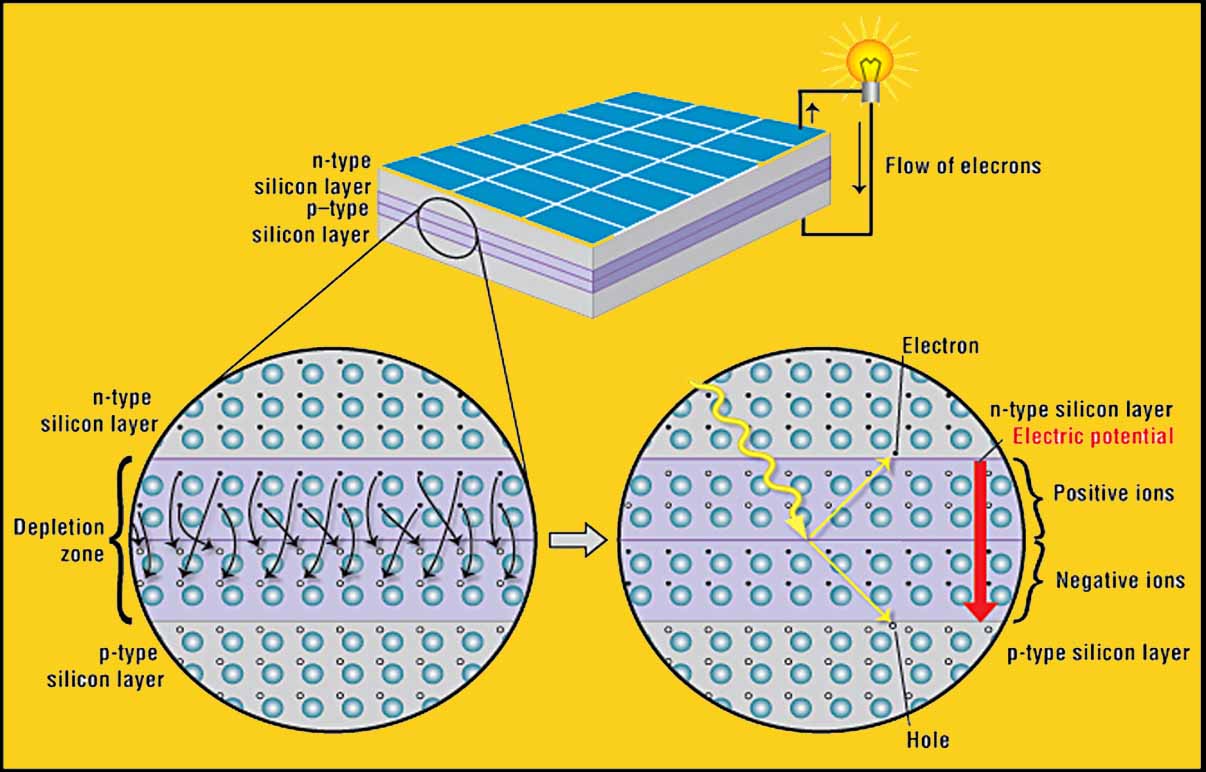Solar Cell-Overview and Types
Solar Cell
The solar cell is a semiconductor device similar to a diode, in which incident photons are absorbed and created electron-hole pairs (EHPs). These EHPs create the flow of electrons which means flow current. So solar cell is a device that directly converts optical energy directly into electrical(voltage).
Photovoltaic (PV) Effect
The effect through which optical energy is directly converted into Electrical energy is known as the Photovoltaic (PV) Effect.
Solar cell: Basic Construction and Operation
- A Solar Cell is a semiconductor device of two layers: n-type and p-type, Which are highly doped.
- These layers form a junction and electrodes are connected to these.
- Incident photons are absorbed by the semiconductors, and they generate electron-hole pairs.
- The Number of generated charges is directly proportional to the light efficiency.
- The negative electron and positive hole must be kept separated so that the electron-hole pair can dissipate its power in an external electron circuit.
- The flow of carriers towards the external load produces DC electrons.
Solar Cell Efficiency
It is defined as the ratio of maximum power delivered by the cell (Pm) to the incident light power (Pin).η=Pm/Pin= Im/Pin
Fill Factor (FF)
It is defined as the ratio of the maximum power of a cell (Pm) to the theoretical limit (Pth)
Fill Factor, FF=Pm/Pth = Vm Im/Voc Isc
Where,
Vm= maximum Voltage at maximum power point (MPP)
Im = maximum current a maximum power Point (MPP)
Voc = Open circuit Voltage
Isc = Short circuit Current
Types of system
- Stand-alone PV System
- Hybrid PV System
- Grid-Connected PV System
- Stand-alone DC PV system without Battery;
- Stand-alone AC PV System without Battery;
- Stand-alone DC PV system with Battery;
- Stand-alone AC PV system with Battery.
2. Hybrid PV System:
In the hybrid PV system, PV modules are the primary energy source and are combined with one or more other electrical power generators.Hybrid PV System= Stand alone PV System + Other one or more electrical generators
Usually, other electrical generators are-
a. Diesel generator
b. Hydro generator
c. Wind turbine generator
d. Gas generator
3. Grid-Connected PV System
The system in which PV is the primary energy source and intended to operate in parallel and synchronously with the electric utility network (Grid), is called the grid-connected PV system.Types of Grid-Connected PV Systems
- Grid-Connected PV system without a backup system
- Grid-Connected PV system with a backup system
Major Problem in Grid-connected PV System
The line maintenance crews are not aware that the lines are still energized, which may cause transient overcurrents when grid power is connected.
Protection control circuits are developed and constantly revised to protect the grid and the PV system from this problem.
PV System Design Steps
- Load evaluation
- Solar Module calculation
- Site Selection
- Battery calculation
- Auxiliary power (hybrid system)
- The charge controller and protection circuits
- Distribution panel & Write selection
- Power Management

.png)



.png)

